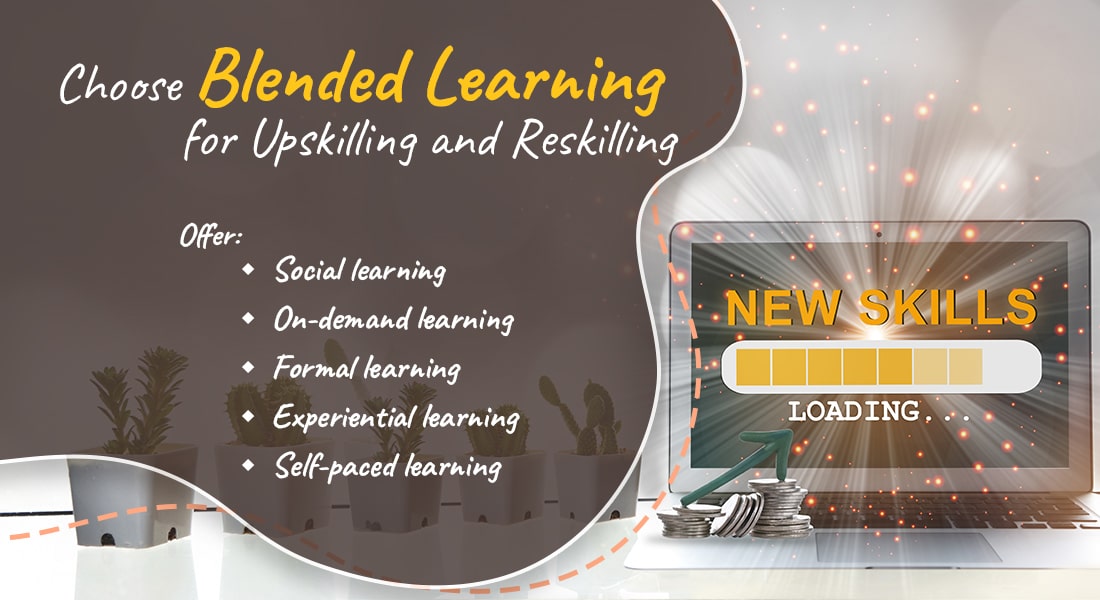7 Top Reasons to Choose Self-Paced Learning for Corporate Training

W hen you are considering implementing e-learning in your organization, the options before you are self-paced learning or live online training, also known as virtual online training. In live online training or virtual training, a ‘virtual’ classroom is created where an instructor or facilitator trains people who are not physically present in the classroom, but spread across remote locations.
→ Download Now: State of Learning (Now and Beyond) [eBook]
In self-paced learning, learners are allowed to undertake the course at their own pace, rather than what is determined by the instructor. The idea behind self-paced learning is to give the learner the liberty to choose his pace because each learner is unique and must be given the liberty to choose how he wants to progress through the elearning course.
What is the mode you will choose to impart e-learning to your employees? Both the above mentioned modes have their benefits and drawbacks. But, one abiding factor of self-paced learning is it allows learners the liberty to take the course at their own pace. In this blog, we will look at other factors that make a strong case for self-paced learning.
Convenience
Self-paced learning gives learners the convenience of learning anytime and anywhere. This gives them an opportunity to balance work and training. They need not fret on not being able to attend scheduled training programs because of work commitments. With self-paced learning, they can choose their time and whether they want to learn at work or at home. Another advantage is, this training can be fit into the employee’s schedule based on their personal preferences or job responsibilities. This convenience encourages employees to finish the course, which significantly reduces dropout rates.
No Scheduling Issues
While self-paced learning offers convenience to learners, it also eliminates scheduling issues for the organization. Scheduling is an issue when you have to train a large number of people by gathering them at the same time. Scheduling issues, rescheduling, or cancellations do not occur with self-paced learning, as the training manager only needs to launch a training program and set a date for its completion.
Cost-Effectiveness
Virtual training involves accrued costs of paying the instructor and for the technology. Self-paced learning does not involve these costs, the only investment is in developing the course. So, it is highly cost-effective.
Fits Different Learning Styles and Needs
We know that different people have different learning styles. While some may prefer to go through the content multiple times to understand it, others can grasp the meaning after one reading. Some learners require more time to complete a course, while others may not. When learning and comprehension times vary, quick learners may have to wait for others to complete the course while slow learners will have to struggle to keep pace with others. Self-paced learning will suit all types of learners because everyone learns at their own pace.
Learning Effectiveness
Learners tend to learn better when they learn at their own pace. This is because they allocate the learning time based on the difficulty of the study material. This improves the retention of difficult subjects because they will devote more time to it and focus their energies on learning.
Scalability
Self-paced learning provides scalability because you can train as many people as you want, with modest incremental costs. Once you have developed the curriculum and training material, which could be your only investment, you can spread the training among as many employees as you choose. It’s also a good return on the investment you made to develop the training because the cost is spread across increasing number of employees who take the course. Your incremental costs would probably be limited to upgrading the technology for reaching more employees.
Reusability
When the training is designed for courses that you will be using again and again (think of training on compliance policies or standard training manuals), self-paced learning is a wise choice. Using it for permanent content removes the need to have live facilitators and related scheduling concerns.
Self-paced learning has many benefits which make it a sensible choice, but on the flipside there are drawbacks as well. Since learners are on their own in this training, they may lose motivation when they encounter difficult topics or wish for interaction with peers, facilitators or experts in the subject.
While designing and implementing self-paced learning, take these issues into account and provide learners access to experts in the subject and peers who can provide better insights. Ensure you provide opportunities for practice and give immediate feedback. This will ensure that your self-paced training initiative is a success.





